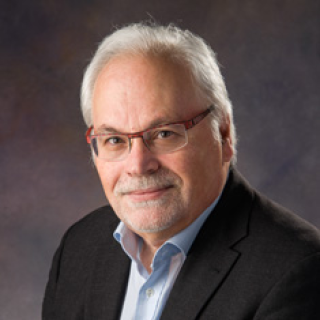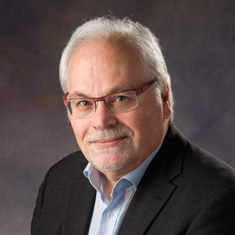
George N. Pavlakis, M.D., Ph.D.
- Center for Cancer Research
- National Cancer Institute
- Building 535, Room 210
- Frederick, MD 21702-1201
- 301-846-1474
- 301-693-8064
- 301-846-7146
- george.pavlakis@nih.gov
RESEARCH SUMMARY
The Human Retrovirus Section designed, developed and tested vaccines and immunotherapies for AIDS and cancer. We developed and tested new technologies including nucleic acid delivery methods in vivo, prophylactic and therapeutic vaccines and immunotherapies. We studied the role and application of cytokines in vaccines and cancer immunotherapy.
The Human Retrovirus Section focused on the development of innovative vaccines and immunotherapies for AIDS and cancer based on the understanding of basic mechanisms, and by combining our expertise in molecular biology, virology and immunology.
A major focus was directed towards DNA vaccine development. We aimed to improve DNA vaccine platform technology and develop immunogens able to prevent HIV infection or progression to AIDS. This was achieved by optimizing DNA vaccine expression, delivery, immunogenicity as well as synergy with other vaccine modalities. The strong and effective cellular immunity achieved by optimized DNA is also an important consideration for the expanding field of cancer vaccines. A related focus area was the study of the biology and clinical applications of cytokines in vaccines and immunotherapies for cancer.
This work was a direct extension of our previous studies and represented a translational component of our basic science accomplishments.
Areas of Expertise

George N. Pavlakis, M.D., Ph.D.
Research
New Vaccine Approaches, DNA Vaccine Optimization
Our overall goal was to improve DNA and nucleic acid vaccination technologies so that these became rapid, safe, and effective vaccine platforms for AIDS, cancer and other diseases. DNA vaccination has distinct advantages, including that it provides a broad priming of the immune system that may result in a robust and effective immune response. The strong and effective cellular immunity achieved by optimized DNA is an important consideration for the expanding field of cancer vaccines.
Rapid advances in the efficiency of DNA vaccination made this approach very promising for the development of safe and effective vaccines with distinct advantages for many indications, including AIDS and cancer. Yet, further research and development was needed for the DNA vaccine field to fulfill this promise. Our goal was to further improve this technology and contribute to its translation to the clinic. We used molecular biology techniques and animal models to test new vectors, new technologies and new combinations for DNA vaccination. We successfully applied our increased understanding of gene expression regulation to the improvement of DNA vaccines. Previously, we showed that DNA vaccine expression in the tissues is a major limiting step for meaningful immunogenicity and we developed general methods for efficient plasmid expression. The methods (RNA or codon optimization to increase mRNA stability transport and expression) had applications in both DNA and viral vaccine vectors and also in gene therapy protocols. These patented technologies contributed to overcoming a critical barrier for clinical application of DNA vaccines. An additional advancement in DNA vaccines was the development of more efficient delivery methods such as in vivo DNA electroporation. These advancements formed the basis for the accelerated development of DNA vaccines for AIDS, other infectious diseases and also cancer. We optimized the formulations and delivery of DNA vaccines using molecular adjuvants, liposomes, nanoparticle formulations and electroporation. A novel potential application for cancer is DNA-delivered immunotherapies, based on the development of efficient expression vectors for cytokines and other immunomodulators. We tested the hypothesis that DNA-delivered immunotherapies would be beneficial in cancer models.
We used different DNA vaccine delivery procedures to discover optimal methods of DNA vaccination. This work led us to the conclusion that both the form and the method of delivery of specific antigens strongly affect the produced immune response. We tested different adjuvants for their compatibility with DNA vaccine protocols and developed shortened protocols able to produce a strong humoral immune response. We compared the humoral and cellular immune responses obtained after DNA vaccination to other vaccine modalities. These studies were important in understanding the strengths and weaknesses of different vectors and protocols and provided guidance for further development of improved vaccine protocols.
A new type of DNA vaccine comprising conserved elements (CE) of HIV Gag protein was developed for a clinical trial on the basis of mouse and macaque immunogenicity. Inclusion of a CE immunogen provided a novel and effective strategy to broaden responses against highly diverse pathogens by avoiding decoy epitopes, while focusing responses to critical viral elements for which few escape pathways exist.
Cytokines and Immunomodulatory Molecules in Immunotherapy and Vaccines
The overall goal of this project was to study the gene expression and function of selected cytokines and other immunomodulatory molecules relevant for cancer and AIDS immunotherapy. This was important for the development of more efficient interventions to alleviate, delay or prevent disease through immunotherapy, gene therapy and DNA vaccine technologies. Such novel interventions require a more thorough understanding of all aspects of cellular processes. One study goal was to develop efficient expression vectors by identifying key elements and factors associated with the pathways of posttranscriptional control of gene expression used by many genes, including cytokines. The validity of this approach was demonstrated by the development of efficient vectors for the expression of important cytokines, especially interleukin-15 (IL-15) and interleukin-12 (IL-12).
In the case of IL-15, an understanding of the cellular mechanisms controlling expression led to methods of preparation and purification of the heterodimeric form of this cytokine and demonstrated that the heterodimer is the bioactive form circulating in human blood. This was recognized as an important development in our understanding of IL-15 function. Pharmacokinetic studies in animals showed that the heterodimeric IL-15 has favorable properties for clinical applications.
Rapid progress in the IL-15 clinical development project led to the production of a GMP lot of heterodimeric IL-15, which we named hetIL-15, for clinical trials. Our hypothesis was that IL-15 would activate natural killer cells and tumor-infiltrating T cells. As a result, hetIL-15 may find important applications in cancer immunotherapy.
This project complemented our efforts to improve DNA vaccines (see above) and DNA-delivered immunotherapies. An additional goal of this project was to explore the function of key cytokine genes to establish their role in normal homeostasis and disease processes.
Our collaborators included Genoveffa Franchini, Marjorie Robert-Guroff, David J. Venzon, Jay A. Berzofsky, Thomas Waldmann, Steven A. Rosenberg, and Barbara K. Felber (NCI); Jeffrey D. Lifson and Elena N. Chertova (Leidos Biomedical Research, Inc./Frederick National Laboratory for Cancer Research); James I. Mullins (University of Washington); Georgia D. Tomaras and David C. Montefiori (Duke Human Vaccine Institute); Timothy Fouts (Profectus BioSciences); Niranjan Y. Sardesai (Inovio); George K. Lewis (Institute of Human Virology/University of Maryland); and David B. Weiner (University of Pennsylvania).
Publications
- Bibliography Link
- View Dr. Pavlakis' PubMed Summary
Co-immunization of DNA and Protein in the Same Anatomical Sites Induces Superior Protective Immune Responses against SHIV Challenge
HIV vaccine: better to start together?
Treatment with native heterodimeric IL-15 increases cytotoxic lymphocytes and reduces SHIV RNA in lymph nodes
Heterodimeric IL15 Treatment Enhances Tumor Infiltration, Persistence, and Effector Functions of Adoptively Transferred Tumor-specific T Cells in the Absence of Lymphodepletion
Biography

George N. Pavlakis, M.D., Ph.D.
Dr. Pavlakis received his M.D. from the University of Athens, Greece, and his Ph.D. from Syracuse University. He has been associated with the National Cancer Institute since 1980 and is currently Chief of the Human Retrovirus Section. He has directed both basic research and clinical development projects based on his pioneering research achievements. Dr. Pavlakis has extensive research and development experience in molecular biology, virology, and immunology. He is credited with the first production of mature human hormones in mammalian cells by recombinant DNA technologies. This methodology is still in commercial production (human Growth Hormone). He continues this work by the development of new production methods and clinical application of heterodimeric IL-15 (hetIL-15), a cytokine essential for NK and T lymphocyte development and function.
Dr. Pavlakis co-developed codon/RNA optimization methods that have found wide applications in biotechnology, gene therapy protocols and DNA vaccines. He developed DNA vaccines for HIV and showed they provide strong and long lasting immunity. He developed strong fluorescent GFP mutants that are in wide use in biology. He studied the molecular biology, genetic organization and expression strategy of HIV and discovered important functions of its regulatory factors Tat and Rev. He described the first transcriptional activator on oncoretroviruses, the Tax protein of HTLV-I and the first posttranscriptional regulatory factor controlling mRNA export from the nucleus, the Rev protein of HIV-1. His studies have provided new insights on the biology of several viruses, and have aided the development of diagnostic and therapeutic procedures. His work has also led to the development of innovative biotechnology drugs and gene therapy procedures.
Dr. Pavlakis is member of several professional societies, including the American Society for Clinical Investigation and the American Association of Physicians. He is a highly cited researcher, has authored more than 200 publications and is inventor of more than 50 US and International patents.
Dr. Pavlakis retired in December 2021 and is now an NCI Scientist Emeritus.